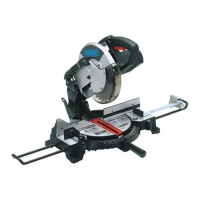
Do you have a question about the Draper MS250 and is the answer not in the manual?
This manual describes the purpose for which this tool has been designed and contains all the necessary information to ensure its correct and safe use.
Read this manual before operation, adjustment, or maintenance for safety and tool longevity.
Illustrations are by Draper Tools; policy of continuous improvement allows modifications without prior warning.
Draper Tools Ltd. declares that the Compound Mitre Saws (Stock Nos: 52352 & 55810) comply with relevant EU directives.
Details part number, stock number, motor, blade diameter, speed, cutting capacity, weight, and sound levels for the mitre saw.
Covers 12 months from purchase, excluding wear and tear, misuse, or unauthorized repairs. Proof of purchase required.
Instructions for connecting the 230V and 110V saws, including plug suitability, earthing, and double insulation.
Provides guidance on selecting appropriate wire size for extension leads based on length and amperage rating.
Illustrates the electrical connections for the compound mitre saw, showing components like the switch, capacitor, and brushes.
Covers keeping the work area clean, avoiding dangerous environments, proper clothing, eye protection, and tool maintenance.
Emphasizes protection from electric shock, staying alert, proper cord handling, and avoiding accidental starting.
Includes keeping guards in place, tool maintenance, using recommended accessories, and securing work.
Ensures saw is inspected, safety goggles worn, and blade/collars are clean and tight before use.
Details on supporting workpieces, avoiding freehand cuts, and ensuring proper blade alignment and tightness.
Guidance on safe lifting, positioning the saw away from people, and securing it to a stable surface.
Covers cutting single/multiple workpieces, handling awkward sizes, avoiding debris, and using correct accessories.
Instructions on avoiding entanglement, fire hazards, electrical shock, and ensuring the saw is running correctly.
Identifies key parts of the mitre saw through figures, including base, controls, scales, fence, and accessories.
Step-by-step instructions for attaching the lower blade guard, ensuring correct movement with the saw head.
Instructions for fitting the 'U' bracket and extension arm, including the end stop for the right side.
Details on adjusting the end stop for squareness and fitting the work clamp for securing workpieces.
Information on using the dust bag and vacuum cleaner, and recommendations for securely mounting the saw.
Procedures for checking and adjusting blade alignment and the mitre table for accurate cuts.
Instructions for aligning the saw head at 90° and 45°, and information on the fixed depth stop.
Explains how to adjust the fence position for different workpiece sizes (front/rear).
Guidance on tilting the saw head for bevel cuts using the scale and locking handle.
Detailed steps for safely removing and replacing the saw blade, including flange bolt instructions.
Simple instructions on how to operate the saw's on/off trigger switch.
Advice on maintaining safe body posture and hand placement during operation to prevent injury.
Steps for setting up and executing a mitre cut, including fence locking handle usage.
Instructions for setting the saw for bevel cuts and executing compound cuts using correct angles.
Guidance on correctly positioning and cutting curved or warped workpieces to avoid blade pinching.
Information on using an auxiliary fence for specific moulding types and when it needs to be removed.
Details on using filler blocks for cutting crown mouldings at specific angles.
Instructions for making vertical bevel cuts on workpieces using a spacer.
Recommendations for using supports to stabilize long workpieces during cutting operations.
Defines common woodworking terms such as Arbor, Bevel Cut, Compound Cut, Kerf, Mitre Cut, and Workpiece.
Covers unplugging the saw, avoiding lubricants on spinning blades, and general care.
Instructions for replacing carbon brushes, maintaining the lower blade guard, and cleaning sawdust.
Details on recommended/prohibited accessories, blade specifications, and lubrication needs.
Specific guidance on lubricating the arm pivot and the lower guard mechanism for smooth operation.
Addresses probable causes like fuse issues or worn brushes and their remedies.
Covers problems like the blade hitting the table or inaccurate cut angles and their solutions.
Troubleshooting for powerhead wobble, stiff mitre adjustment, or a powerhead not rising fully.
Addresses blade binding, jamming, burning wood, and excessive tool vibration with relevant remedies.
Blank page for user notes.
Provides contact details for Draper Tools Ltd., including helpline, sales desk, general inquiries, fax, website, and email.
